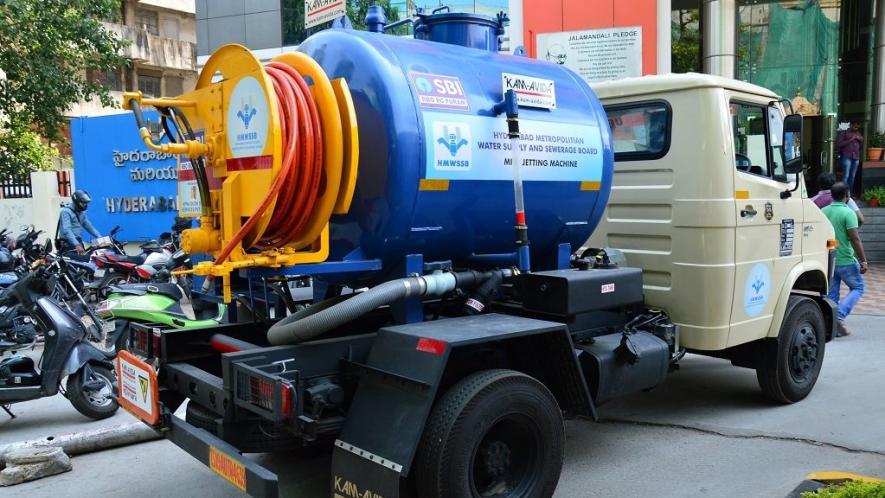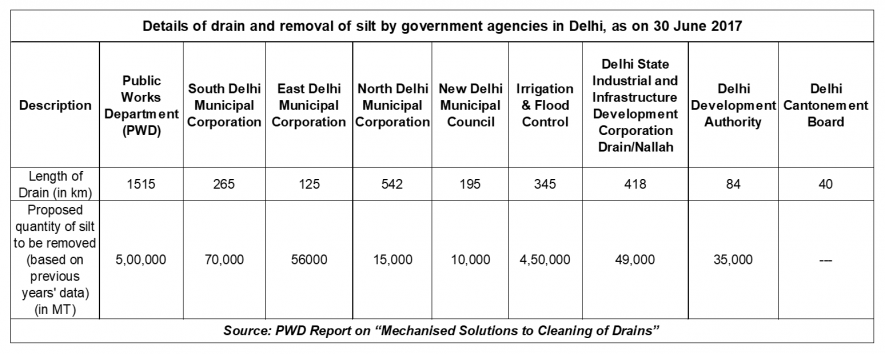Delhi Jal Board to Mechanise Sewer Cleaning to Prevent Worker Deaths in Sewers

Water jetting machine (Representative image).
The Delhi Jal Board (DJB) has submitted a report to Anil Baijal, the Lieutenant Governor of Delhi, on its plan to prevent sewer deaths. A report in the Times of India says the 3,000 crore rupees project, if approved, would completely mechanise the cleaning of the sewers in the city. This exercise of the government was initiated in the wake of increasing incidents of deaths of workers in the sewers. Another report on the same issue, titled “Mechanised Solutions to Cleaning of Drains” (MSCD), was earlier submitted by the Public Works Department (PWD) to the Delhi Government.
The report, which was accessed by Newsclick reveals the overall scenario of the existing drainage system in Delhi. The drains running through the city are around 3,529 km long, and 11,75,000 Metric Tonnes (MT) of silt is removed currently.
Details of drain and removal of silt by government agencies in Delhi

The report does not have the data on the length of the sewer lines in Delhi. Even the earlier report that was submitted by a committee headed by Prof. A K Gosain of IIT Delhi did not have information on the length of the sewers in the city. In the absence of the data on the sewage system, the report as a long-term measure recommended the “laying of a sewerage system to cover the entire city.”
The report, however, has proposed as a “medium-term measure” to use machinery to eliminate the use of “manual labour”. It has also recommended a total of 145 machines (90 Super Sucker Machines, 35 Manhole De-silting Machines, 20 Suction-cum-Jetting Machines) that would eliminate the entry of human beings into the manholes for cleaning. The estimated cost of buying, operating and maintaining the machines is Rs 2701.43 crores.
The report, however, may have got its estimates wrong on the number of jetting machines required for cleaning in a city like Delhi. In Hyderabad, a similar project was implemented and a minimum of 70 mini jetting machines and about 58 super sucking machines are currently being employed to clean. Hyderabad is a city with an estimated population of 94,89,000, while Delhi is nearly three times bigger with an estimated population of 2,71,97,000. So it stands to reason that Delhi would require many more machines, including 210 mini jetting machines to operate in narrow lanes alone.
The MSCD report took into account only drains and not the sewer-lines, and the government may need to re-estimate the total number of machines needed to prevent human beings from entering manholes to clear blocks.
Disclaimer: The views expressed here are the author's personal views, and do not necessarily represent the views of Newsclick.
Get the latest reports & analysis with people's perspective on Protests, movements & deep analytical videos, discussions of the current affairs in your Telegram app. Subscribe to NewsClick's Telegram channel & get Real-Time updates on stories, as they get published on our website.
























